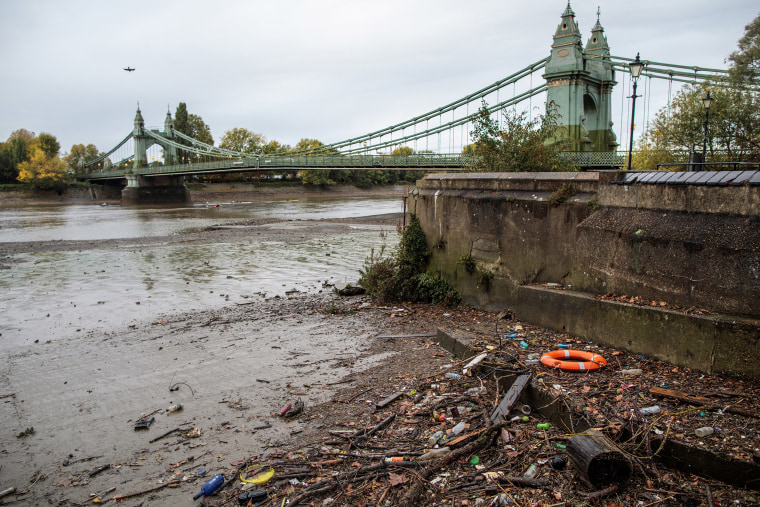LONDON — Just over 60 years after it was declared "biologically dead," England's River Thames had been hailed as an environmental success. But while much of the effluent, chemicals and heavy metals that used to pollute the river are gone, microplastics have taken their place.
Mammals like porpoises, seals and over 100 species of fish could be in danger after a series of studies by researchers from London's Royal Holloway University determined that the Thames, which flows through London, had some of the highest densities of microplastics found in any river in the world.
When compared to global estimates of microplastic pollution, the Thames has "very high levels," said Katherine Rowley, a Ph.D. student and one of the authors of the study, published in the journal Science of The Total Environment.
Because of the risk to wildlife, ecosystems and human health, it is of "great importance that the input of plastic into marine and freshwater environments is reduced," she added.
The study found that 94,000 microplastics flow through some sections of the Thames every second at a density that's higher than comparable urban rivers, including the Chicago River, the Rhine in Germany and Romania's Danube.
Plastic can enter the water in a number of ways, such as the improper disposal of packaging, household items and cleaning products, the study found. Wind can also blow items that have been placed in the trash into the water, and items improperly flushed down the toilet can get into waterways. These larger items eventually break down into tiny fragments known as microplastics.
Washing machine outflows are another major source of microplastics, as they are emitted by clothing made from synthetic fibers like polyester.
Researchers also fear that the boom in the use of disposable plastic items like gloves, cleaning wipes and masks during the coronavirus pandemic is exacerbating the problem.
While public awareness about the impact of microplastics on the ocean environment is growing, the study demonstrates that it is cause for great concern in freshwater, too.
Over 10,000 metric tons of plastic is estimated to flow into the Great Lakes from the U.S. and Canada every year, and rivers are thought to be the main way that plastic reaches the oceans, according to a 2016 study by the Rochester Institute of Technology.

In the U.K., plastic from a large range of sources including glitter, microbeads and broken down food packaging was found in the Thames.
Large quantities of disposable cleaning wipes — which contain plastic fibers — were also found on the foreshore of the river in separate research by Royal Holloway University Masters student Katherine McCoy.
Dubbed "massive wet wipe reefs," these are thought to have entered the river by people flushing them down the toilet.
Clams living near the build-up were found to contain high levels of plastic fibers that McCoy suggested may have originated from the wipes.
Crabs living in the river were also found to have had up to 100 pieces of plastic in their stomachs, in a third study by her fellow Masters student, Alex McGoran. Over 95 percent of the Chinese mitten crabs examined had plastic present, which could lead to reduced feeding by sending signals that the stomach was full, the study suggested.
With the river and its estuary now home to over 100 species of fish, two species of seals and even sharks and seahorses, Anna Cucknell, Thames project manager at the London Zoological Society, said she was "shocked" by the findings.
"We must not let plastic pollution threaten their survival," she said.
Microplastics can also be ingested by organisms that live in the water and spread throughout the food chain damaging the ecosystem and even getting into the food that humans eat.
The problem has become so widespread that a 2019 Worldwide Fund for Nature study estimated that the average person eats the equivalent of a credit card of plastic every week.
The increased use of cleaning products like disposable wipes, as well as the improper disposal of single-use masks and gloves, during the pandemic threatens to exacerbate the problem, according to another of the study's author's, Dave Morritt, a professor of biological sciences at Royal Holloway University.
"Although these studies illustrate the problem on a local scale, plastic pollution is very much a global issue," he said.
